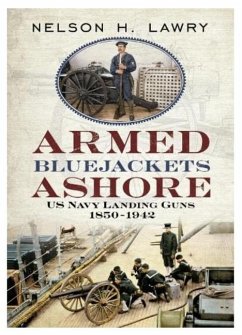"... well written, authoritative, and very well-illustrated. It offers enough detail for the experts and enough action for the casual reader." - National Maritime Historical Society In a series of imperial adventures in the mid- to late nineteenth century, often in cooperation with the Royal Navy, the United States Navy put armed landing parties ashore in Africa, Asia, and Central and South America. Their purpose was chiefly to protect Americans and their national interests, but such parties also served to safeguard international communities against the "savage hordes" of "uncivilized" nations. The following century saw landings against more developed nations such as Mexico and Russia. Specially designed light field guns carried aboard gunboats and larger warships sometimes supported the bluejackets and marines, customarily when larger parties more likely to face sharp actions went ashore. In Armed Bluejackets Ashore, Nelson Lawry explores in meticulous detail a subject area barely considered in previous American naval histories: that of US Navy landing guns. From the bronze Dahlgren muzzleloading smoothbore howitzer deployed extensively during and after the Civil War, to the final 3-inch naval landing gun, the Mark XI, which likely saw use in the Philippines during 1942, this book chronicles the history and characteristics of every model of US Navy landing gun in service between 1850 and 1942. It is an account of a largely forgotten but fascinating part of US naval ordnance development, evolved in the exciting context of interdepartmental wrangling, coercive diplomacy, swashbuckling military adventure, and actual combat.
Bitte wählen Sie Ihr Anliegen aus.
Rechnungen
Retourenschein anfordern
Bestellstatus
Storno








